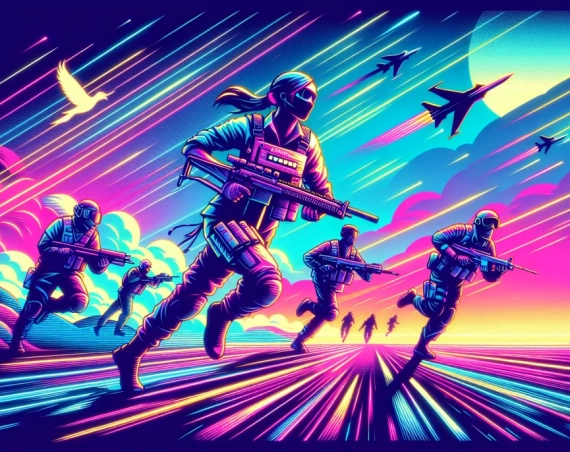
Balancing Freedom and Narrative in Ghost of Yotei’s Open World
Ghost of Yotei, the much-anticipated PS5 sequel to the acclaimed Ghost of Tsushima, offers players a vast and immersive open world set in the rugged region of Ezo. Having spent nearly 80 hours exploring Atsu’s journey for revenge, it becomes clear that the game presents an unprecedented amount of content—from collectibles to dynamic events—all harmonized within a meticulously crafted experience.
The Challenge of Evolving Open-World Design
Jason Connell, the creative director at Sucker Punch Productions, explains that their primary ambition was to push the boundaries they had previously set with Ghost of Tsushima. “We’ve been making open-world games for a while,” Connell states, “and we wanted to challenge ourselves to elevate the experience beyond what’s expected and redefine what an open-world game can offer.”
According to recent industry analysis, open-world games remain one of the fastest-growing segments in gaming, expected to reach a valuation of $71 billion globally by 2028 (Source: Newzoo Global Games Market Report 2023). However, the balancing act between player freedom and narrative coherence continues to be a central design challenge.
Prioritizing Player Freedom Without Sacrificing Story
Sucker Punch focused on offering more freedom than any game they had previously developed. This was achieved by minimizing reliance on the traditional open-world markers like question marks and extensive journals, which often overwhelm players. Connell describes this as a “forward, experiential way” of engaging players, emphasizing natural discovery and immersion over rigid guidance.
- Introduction of a innovative clue system to subtly guide players without overt handholding.
- The new camping mechanic, a first for the studio, integrates rest and planning as part of the world’s natural rhythm.
- The Wolf Pack menu, which consolidates important NPCs and story elements, making narrative threads accessible and visually engaging.
The Wolf Pack, for instance, visually illustrates Atsu’s transition from solitude to forming meaningful connections, enriching the player’s emotional investment.
Natural Exploration and Emotional Engagement
Connell emphasizes that exploration is encouraged by in-world cues, such as spotting something intriguing on the horizon and riding through diverse environments like fields of flowers or streams. This design philosophy aligns with player psychology research indicating that autonomy and discovery significantly increase player engagement and satisfaction in open-world titles (Source: Journal of Gaming & Virtual Worlds, 2024).
The Complexities of Narrative Pacing in an Open World
Balancing player agency with a strong, character-driven narrative remains “almost impossible sometimes,” Connell admits. The team invested significant effort optimizing how the main storyline coexists with the open-world freedom players cherish. They utilize behavioral data, including heat maps tracking common player paths, to distribute a balanced mix of combat, non-combat activities, and scenic diversions along these routes.
For example, the placement of sumi-e paintings serves as artistic pauses that enrich pacing and break the potential monotony of continuous combat or quests.
While encouraging players to follow the Golden Path—the main storyline—Connell respects diverse playstyles. Testing reveals that those who pursue key story missions and obtain essential weapons experience heightened enjoyment and narrative satisfaction.
Adaptive Game Design Strategies
To gently steer players without imposing, Ghost of Yotei offers:
- Contextual reminders through the clue system to reignite interest in the main story or highlight nearby weapons.
- Non-intrusive prompts that preserve player choice, aligning with findings that forced pacing can reduce immersion in open-world games (Source: Gamasutra, 2023).
- Distinct pacing models for narrative and open-world segments, recognizing their differing design challenges.
Industry Insights: Comparing Open-World Innovations
Ghost of Yotei’s approach contrasts with other recent open-world games such as Elden Ring and The Legend of Zelda: Breath of the Wild, often cited as genre-defining. While these games excel at non-linear exploration, Ghost of Yotei emphasizes an emotional narrative thread woven seamlessly into the open world.
Interestingly, the developers aim to address repetition problems noted in titles like Ghost of Tsushima, by offering varied activities and unique rewards based on player behavior. This is reminiscent of changes in newer games that use dynamic content generation to keep exploration fresh (Source: GamesIndustry.biz, 2025).
Case Study: Wolf Pack Menu and Clues System
The Wolf Pack menu consolidates interaction points, proving an intuitive tool that enhances narrative clarity without sacrificing exploration. Similarly, the clue system functions as a lightweight guide that aids player navigation without detracting from the organic discovery experience—a common pitfall in many open-world games.
Conclusion: Redefining Open-World Gameplay
Ghost of Yotei exemplifies the evolving landscape of open-world game design, where freedom is paramount but narrative depth remains vital. Sucker Punch’s meticulous balancing act between creating a sprawling, interactive world and a compelling, emotionally resonant story sets new standards for the genre.
By integrating player behavior data, innovative UI elements, and a commitment to letting players chart their own journey, Ghost of Yotei demonstrates that open-world games can offer both expansive freedom and meaningful storytelling.
For enthusiasts interested in the evolution of open-world games, Ghost of Yotei is a landmark title that challenges conventions and offers rich lessons for future design.
Key Takeaways
- More player freedom: Reduced reliance on traditional game markers fosters organic exploration.
- Narrative balance: Innovative systems maintain story engagement without restricting player agency.
- Data-driven design: Heat maps and player behavior inform content placement.
- Addressing genre challenges: The game tackles repetition and pacing issues common in open-world games.
- Emotional storytelling: The Wolf Pack menu enhances character connection and plot clarity.
For Further Exploration
Interested readers can explore more about the best open-world games and trends shaping the genre through up-to-date industry analyses and player reviews.
Ghost of Yotei is now available on PS5, continuing Sucker Punch’s legacy of innovative open-world storytelling.


